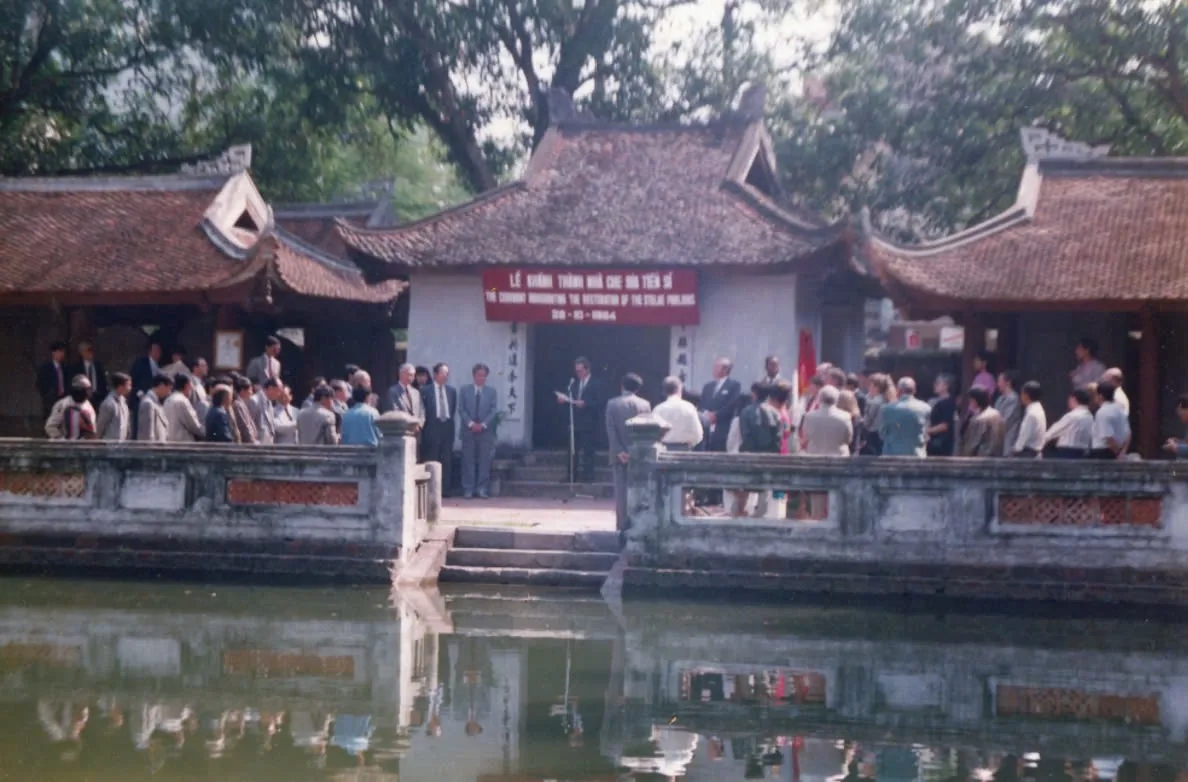Hoang Dao Kinh – Architect driven by passion for Hanoi
Architect Hoang Dao Kinh, laureate of the Bui Xuan Phai Award - For the Love of Hanoi, has dedicated more than 50 years to the preservation of relics throughout the country, especially in Hanoi.
Architect Hoang Dao Kinh has been dubbed the "knight of the architectural relics." Out of love and passion, he has spent his life working to preserve and restore relics.
His main concern now is how to preserve the soul and uniqueness of Hanoi in the context of urbanization.
Family tradition as source of love
Professor Hoang Dao Kinh was born in Hanoi in 1941. He is the son of the revolutionary and culturalist Hoang Dao Thuy.
"During his lifetime, he was very shy about being called a 'Hanoi scholar'. He saw himself only as a storyteller about Hanoi. Indeed, through his four books and dozens of articles on Hanoi, we feel as if we are listening to the stories of a person who lived sometime during the reign of the Later Le Dynasty and sometimes during the French invasion of Hanoi. He tells stories about the long and very Hanoian life of Hang Gai Street; about famous Hanoians and forgotten people...," Kinh said of his father.
Hoang Dao Kinh said that rather than writing as a researcher, the academic Hoang Dao Thuy wrote with the remarkable recall of someone who had lived in Hanoi for nearly a century. As a result, all the stories in his novels are first-hand accounts of contemporary people of the times in which the authors lived.
| Architect Hoang Dao Kinh is honored with the Bui Xuan Phai Award - For the Love of Hanoi. Photo: Nam Nguyen/The Hanoi Times |
In Hoang Dao Kinh House, there are many relics of culturalist Hoang Dao Thuy, including works such as Thang Long-Dong Do-Ha Noi, Old Hanoi Streets, Hanoi People and Scenes, Elegant Hanoi, and others.
Perhaps it was through these works that architect Hoang Dao Kinh had the opportunity to become deeply involved in the culture and people of Hanoi. The sense of responsibility to contribute to the preservation and promotion of Hanoi's cultural values came quite naturally to him from the foundation of his family's tradition.
Be careful with relics
Architect Hoang Dao Kinh's career spans from north to south, with heritage projects in Hanoi, Hue, Hoi An, My Son... However, he is deeply attached to his birthplace, Hanoi, with a special love for the historical relics and cultural heritage that are symbols of the thousand-year-old city.
He is the chief architect of many relic conservation projects, such as the Tay Dang Communal House in Ba Vi District, Kim Lien Pagoda in West Lake, Van Mieu-Quoc Tu Giam, Hanoi Opera House, and others.
"I am most attached to Hanoi, both in my professional work and in my thinking. But seriously, the things I have done for Hanoi in terms of visual aspects are probably not many, because there are not always opportunities. However, I have spent a lot of time and effort taking care of Hanoi's relics, and I am satisfied with what I have achieved," he confided.
Architect Hoang Dao Kinh's major contribution to the conservation and restoration of the Temple of Literature is the design of the roofs for the 82 stone steles, which were inscribed on the UNESCO Memory of the World List in 1992.
| Galleries of stone steles are inaugurated at the Temple of Literature. Photo courtesy of Hoang Dao Kinh |
In the 1990s, many solutions were proposed to protect the priceless stelae in the Temple of Literature from the wear and tear of the environment and the elements. Some suggested creating modern roofs with alloy structures and glass panels or using chemicals to preserve the steles. All of these solutions were criticized as inappropriate and untried in practice.
"Then we came up with the solution of creating roofs with traditional architecture that would not contrast with the relics and would be easy to build. To avoid creating large stele houses that would challenge the nearby Khue Van Cac and the courtyard space, we divided them into two rows, eight stele houses, in proportion to the Temple of Literature complex," recalled architect Hoang Dao Kinh.
Commenting on current concerns about Hanoi's heritage, architect Hoang Dao Kinh said that the capital's urban architectural assets are under severe threat.
"Hanoi's infrastructure has been built too quickly, with modern and large buildings. This is all well and good, but there is a danger that the cultural quintessence of the city's architectural heritage will be crushed," he said.
He struggled with how to keep Hanoi a unique city in the context of urbanization that is taking place in many cities in the country and the world, and how to preserve the unique features and quintessential values of Hanoi.

.jpg)











